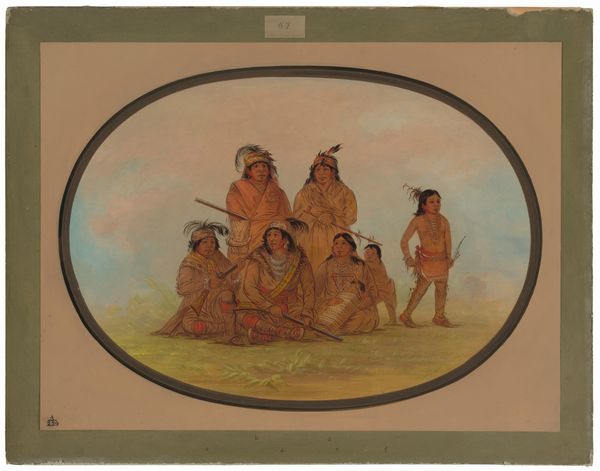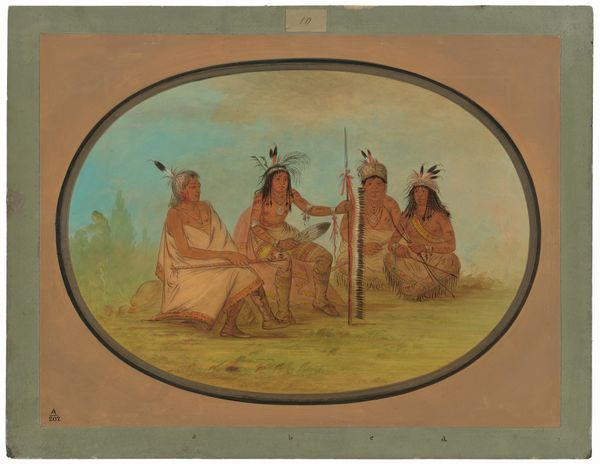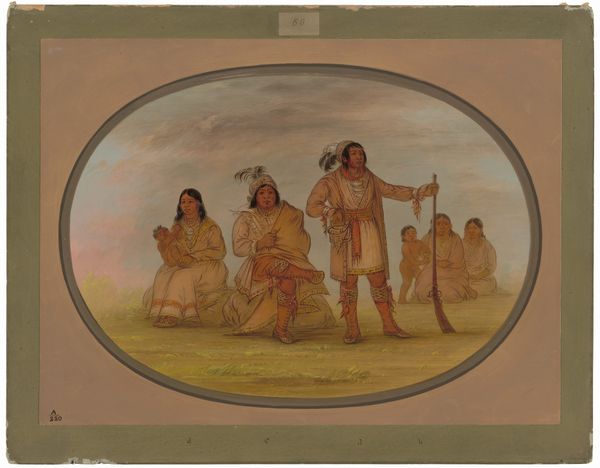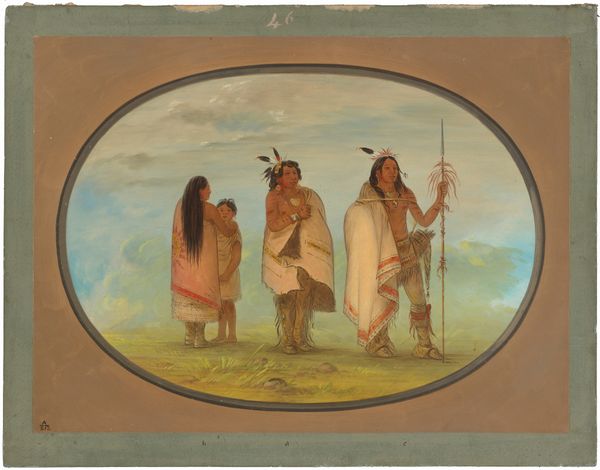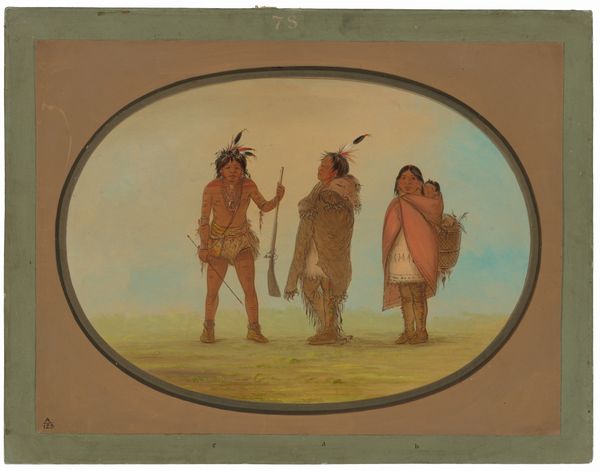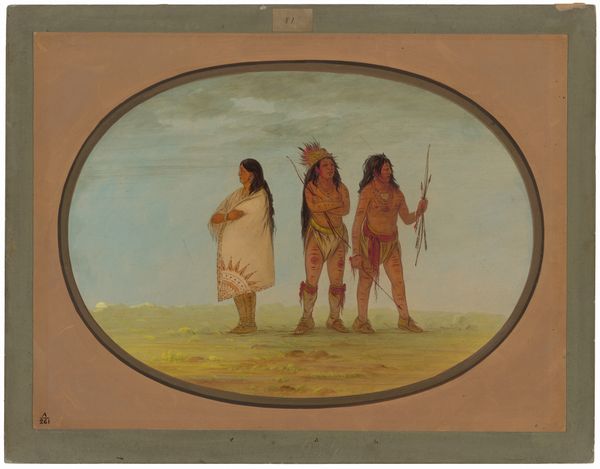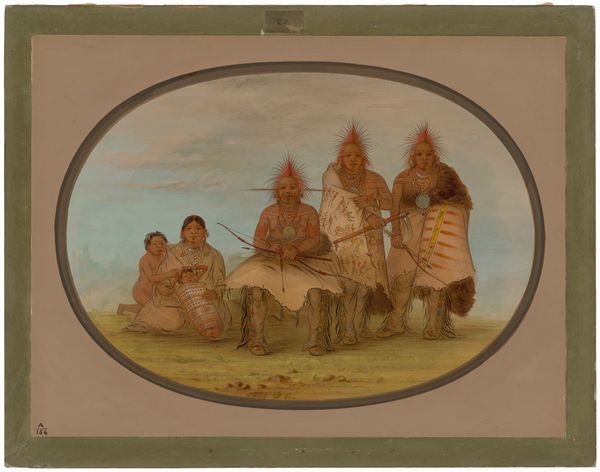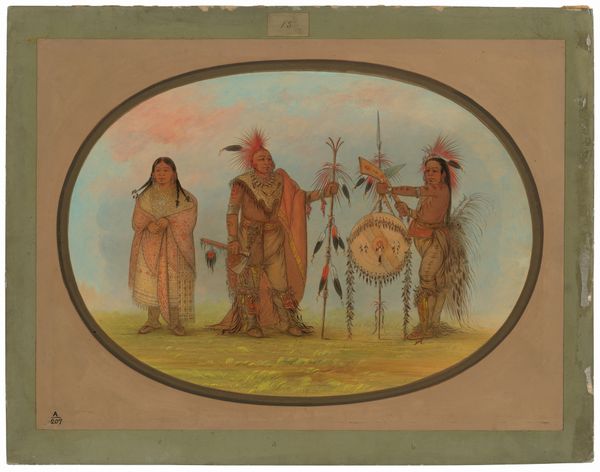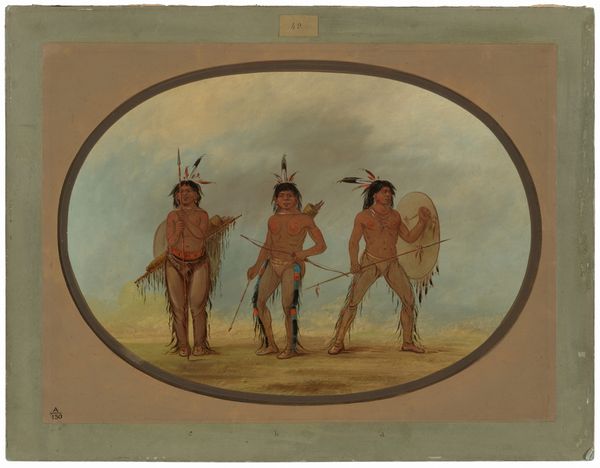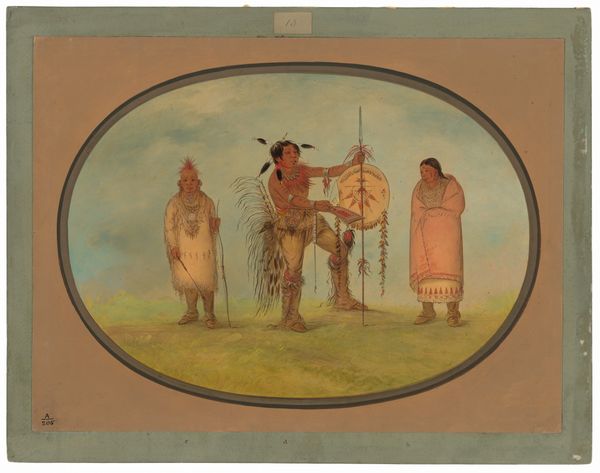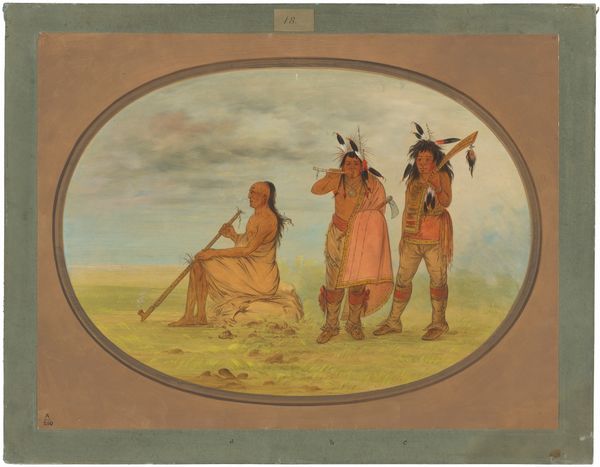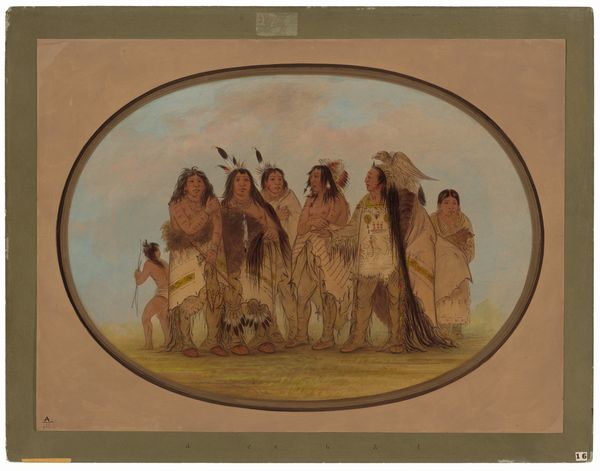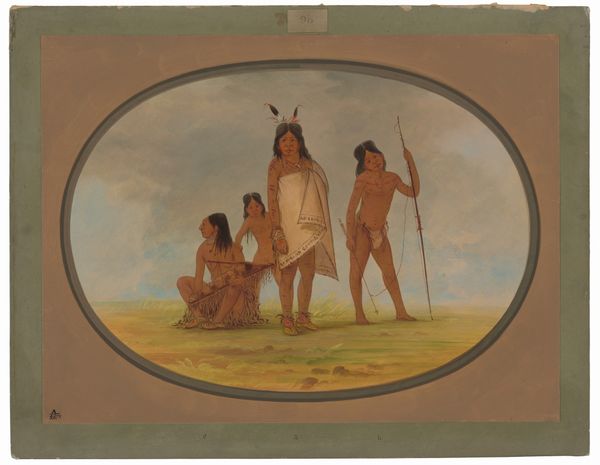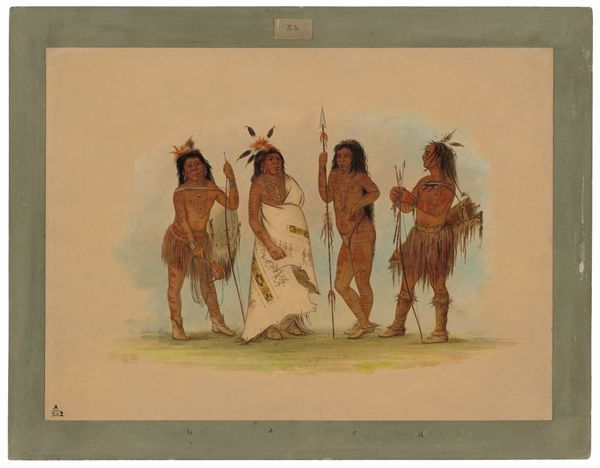
painting, gouache
#
portrait
#
water colours
#
painting
#
gouache
#
watercolor
Dimensions: overall: 46.2 x 62.2 cm (18 3/16 x 24 1/2 in.)
Copyright: National Gallery of Art: CC0 1.0
Curator: I am immediately drawn to the somber quietness of this piece. It has an ethereality created by the watercolor medium which imbues the group portrait with a sense of gentle nostalgia. Editor: This watercolor, entitled “Osage Indians,” was completed sometime between 1861 and 1869 by George Catlin. Catlin is well known for dedicating a large part of his career to documenting the lives and customs of Native American tribes in the 19th century. Curator: Yes, Catlin viewed himself as recording a vanishing world. And here, despite the romantic framing, there’s a sense of inherent dignity. The central seated figure is gesturing outward with what I perceive as quiet authority. His ornate regalia and relaxed posture suggest a leader in conversation. The feathered adornments on the warrior in the back carry the weight of ceremonial practice. Editor: The image is rich with symbolism of the Plains Indians. Look at the structure erected behind the woman and child, what might be hanging from the structure? Could it be shields or tools related to daily life in the tribe? And the standing figures with their spears, is it protection or ritual display? Curator: The watercolor medium contributes significantly to the narrative, too. Catlin's artistic practice highlights the impermanence he attributed to the traditions he was capturing. Editor: Do you think that, in a sense, Catlin's perspective influenced the future as well? Curator: Certainly. Catlin shaped a vision, particularly among European audiences, of a romantic, “vanishing” Native American. This constructed narrative undoubtedly impacted the socio-political interactions between settlers and Indigenous peoples. These portraits became embedded in the national identity of the US. Editor: These images certainly encourage thoughtful engagement. In seeing the rich regalia and intimate groupings, it offers a window into an important culture. Curator: Absolutely. The melancholic air reminds us of both what was lost and what continues to endure, albeit transformed, within Indigenous communities today.
Comments
No comments
Be the first to comment and join the conversation on the ultimate creative platform.
